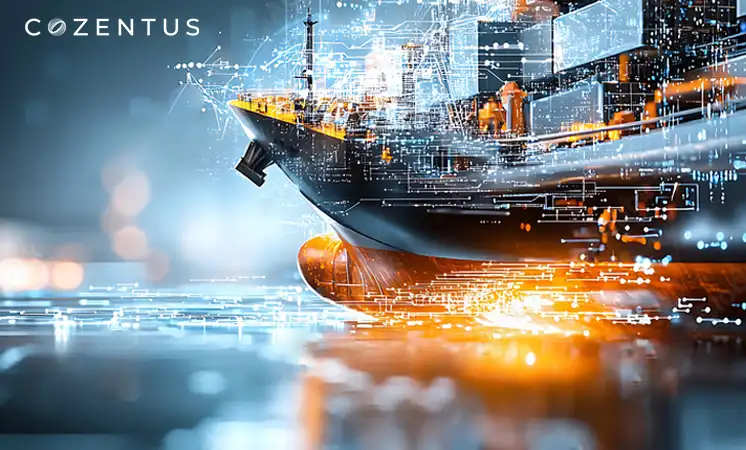Due to globalisation, the transportation sector is under tremendous pressure to enhance its services, with the globe becoming linked. Everyone needs a pleasant, risk-free experience, whether moving casually or commuting for work. Along with it, logistics firms' demands have risen. Transportation management is no longer about transferring freight at the lowest possible cost. Technology has advanced, and companies have grown. Transporters must enhance their leadership and services to compete in the market due to complicated supply chain frameworks and multiple components. Within the logistics business, digitalisation will skyrocket during the next five years. Until recently, the logistics industry was sluggish in adopting new digital technology.
Digitalisation In the Logistics Industry
Most sectors have been through company digitisation in the past several years. New market entrants, higher client expectations, and the need for greater efficiency prompted existing operators to adjust to the new age of seamless global commerce. The transport and logistics business is no exception to this change. Being one of the fastest-growing sectors globally, it needs to shift more than ever from long-established traditions to tackle the difficulties of international commerce. The world became digital - a fact not just for logistics but for many elements of existence.
There are four types of digital transformation:
- Business procedure
- Model
- Domain
- Social/organisational
Machine learning and artificial intelligence have played an important role in logistics digitisation. AI and machine learning are now taking over to digitise practically every industry and logistics organisation and its future systems.
Many trends were established before the epidemic and culminated in the latter months due to worldwide lockdowns. Daily life evolved to virtual work and study, driving e-commerce to a new level.
A digital existence requires digital solutions for the industry to deal with the growing demands in global commerce and rising client expectations.
Why Do Logistics Firms Require Digital Transformation?
Due to the multiple stakeholders in different countries within the supply chain, the digital transformation of organisations and operations is crucial.
To boost end-to-end visibility and efficiency, shipping procedures and back-office activities must become digital—real-time, freight prices, digital bills of lading, and automation increase operational efficiency considerably.
Even while digitisation is not the company's purpose, it is essential to provide more transparent and efficient solutions.
For a long time, the technologies employed in the business, such as AS400 green screens, had not made huge jumps.
It has now altered substantially. Most of the leading significant firms within the logistics sector have moved their systems to more efficient and automated ones.
The digitalisation helps them to handle, for instance, generate queries or get estimates quicker. According to a Forbes Insights poll, 65 per cent of logistics organisations identify converting to the digital business model to thrive in the digital era.
How Did Digitalisation Assist?
Under these conditions, the use of technology in the transportation and logistics industries has allowed firms to increase the quality of their services.
Logistics and transportation companies embrace technological innovation, and many logistics workers anticipate that technology will bring more visibility and significant efficiency advantages. Digitisation enables businesses to improve the overall customer experience, with AI reasoning and MI solutions at the forefront.
Digital Trends Are Important
The transportation and logistics business is likely to witness significant growth in digitalisation in the following years.
These businesses are putting money into technology to:
- Increase consumer reach
- Increase efficiency.
- Increase in speed.
- To reduce service time.
- To earn consumers' loyalty.
- Increase in revenue.
Adapting frameworks, business strategies, and customer experiences via technology to meet evolving company and market needs.
Digitisation can be used in the transportation and logistics industry to:
- Organisational scale
- Operational level in business
- The domain-level
- Strategic plan
4 Successful Digital Transformation Trends in Logistics
With growing customer demands and competition, logistics companies have an opportunity to stay ahead of the curve and digitalise their primary business processes. Using Amazon and Walmart as examples and key technology might be an excellent place to start. To make the expansion more sustainable, it is essential to work with various logistics providers, invest in fundamental computerised stages, and get trade knowledge.
- Machine Learning
Machine learning contributes to the digitalisation of management systems. It might be tough to predict and estimate future requirements at times. This problem has now been solved through machine learning. Machine learning helps organisations make decisions by forecasting future needs and wants for new products.
By lowering the amount of money and time spent on the track, these two have streamlined supply chain management and maximised resources.
Supply chain networks can benefit from machine learning algorithms to identify recurring patterns. Being aware of the significant elements driving a company's success provides them with a leg up in the market.
These patterns can detect inventory levels and product quality, anticipate orders, strategise manufacture, manage transportation, analyse shipping costs, and minimise or avoid shipping dangers. ML assists logistics companies in making decisions by estimating future demands and demand for new commodities. Reducing the cost and time spent getting insight has streamlined the supply chain network and boosted assets.
- Artificial Intelligence
AI is a vital technology that is for a variety of tasks. One of the most valuable sectors is logistics and supply chains, which deal with complicated procedures, including managing stocks, transferring items to warehouses, and monitoring transportation routes in real-time. It augments critical judgments by making cognitive predictions and recommending the best course of action. It has the potential to improve overall supply chain performance. It also assists manufacturers in determining the potential consequences of different situations in terms of time, cost, and income. Furthermore, continually learning over time improves these suggestions as relative conditions change.
Artificial intelligence has sparked the development of:
- Electric vehicles
- Automation Vehicles
- GPS
- Blockchain
- Three-dimensional printing
- Cloud computing
Artificial intelligence has enabled organisations like Cozentus to access required data, such as payment information, dates, partners, addresses, and so on, from any location and at any time.
The evaluation and organisation of this data, the recognition of designs, and the generation of reports may considerably increase operational efficiency for freight forwarding firms.
It aids transportation organisations in the following areas:
- Deal with traffic
- Identifying potential threats
- Creating the framework
- Using self-driving technology in their operations
- Autonomous Vehicles
Currently, a substantial percentage of logistics is being handled by autonomous cars, and it won't be long until these machines run the whole transportation process. Forklifts, air terminals, ports, and robot arms in warehouses are now commonplace in the supply chain, despite the lack of autonomous vehicles.
Autonomous vehicles have played an important role in logistics and transportation, and the day is not far off when the entire transportation system will be independent. Although autonomous trucks aren't widely used yet and must be approved for urban traffic, we see forklifts in distribution centres, airports, and ports, among other places, with robot arms in warehouses.
Furthermore, we will soon see self-driving trucks on the road transporting goods with automatic forklifts and loading them into warehouses.
- The Blockchain
Blockchain is a cryptographic technology that is one of the most impressive technologies used in transportation and logistics.
It can assist organisations in the following ways:
- Lowering the likelihood of fraud or cheating
- Keeping bottlenecks and errors at bay
- Increasing efficiency and safety
- Keeping track of financial transactions
- Preventing data manipulation
- Tracking assets
- Sharing real-time information
- Saving time
- Delivering better customer services
- Increasing transparency
The correctness of operations can assure with its assistance. It stores all financial transaction data and aids in creating intelligent agreements.
It also assists logistics firms in monitoring freight limitations and determining freight costs depending on volume, and it has the potential to bring transparency into operations.
Conclusion
The globe becomes increasingly linked every day, and global commerce and product movement rely on transportation services. Every object in our environment, from clothing to electronics, is imported worldwide. With the current pandemic's devastation, all sectors globally, including transportation and logistics, were exposed to health and financial threats. Some organisations are still recuperating from the pandemic's effects. All of this put the strain on the transportation and logistics business, as everyone desired safe and seamless travel and safe and on-time delivery of their goods.
Recent Post
Subscribe to our newsletter
Stay updated on latest trends and news in the supply chain and logistics industry








